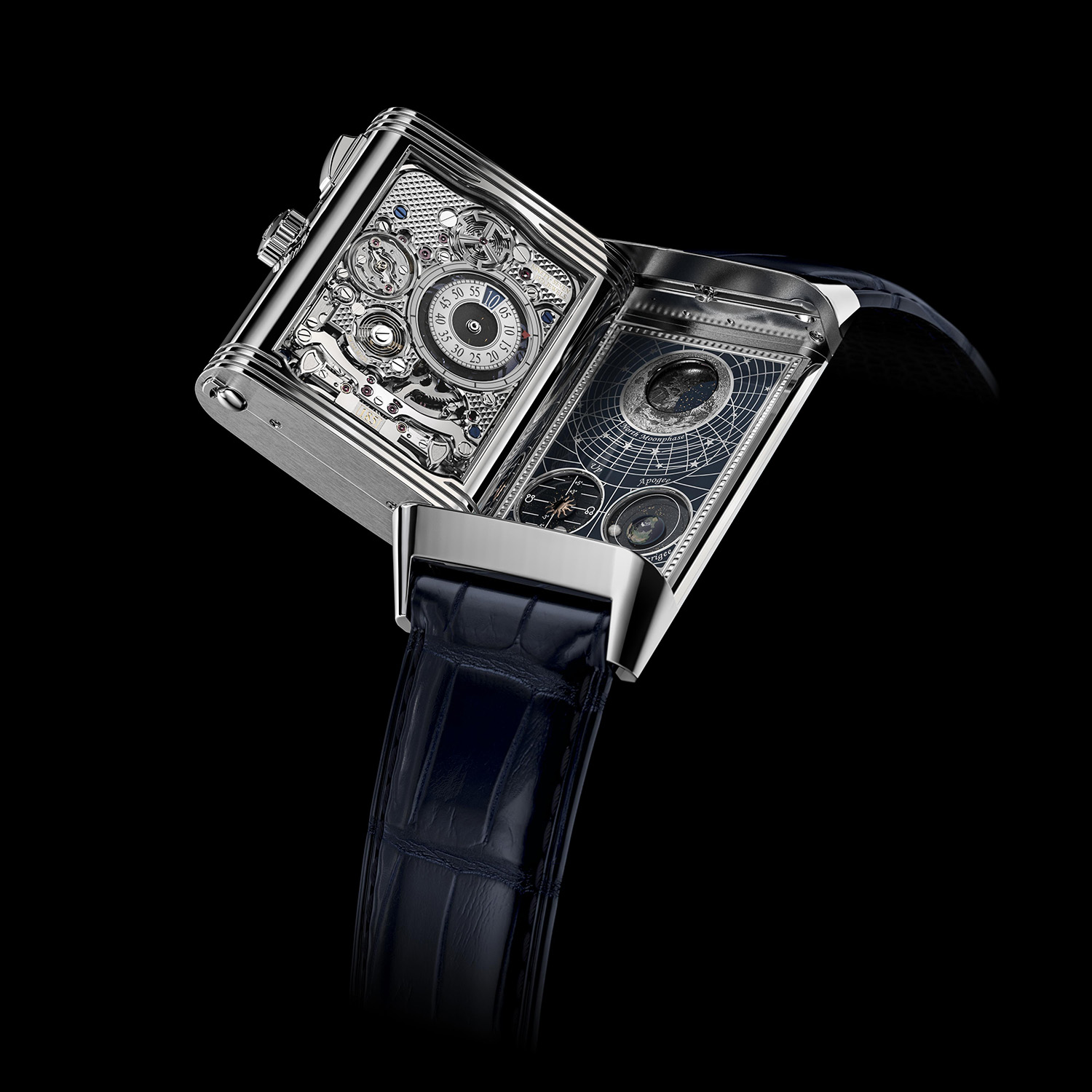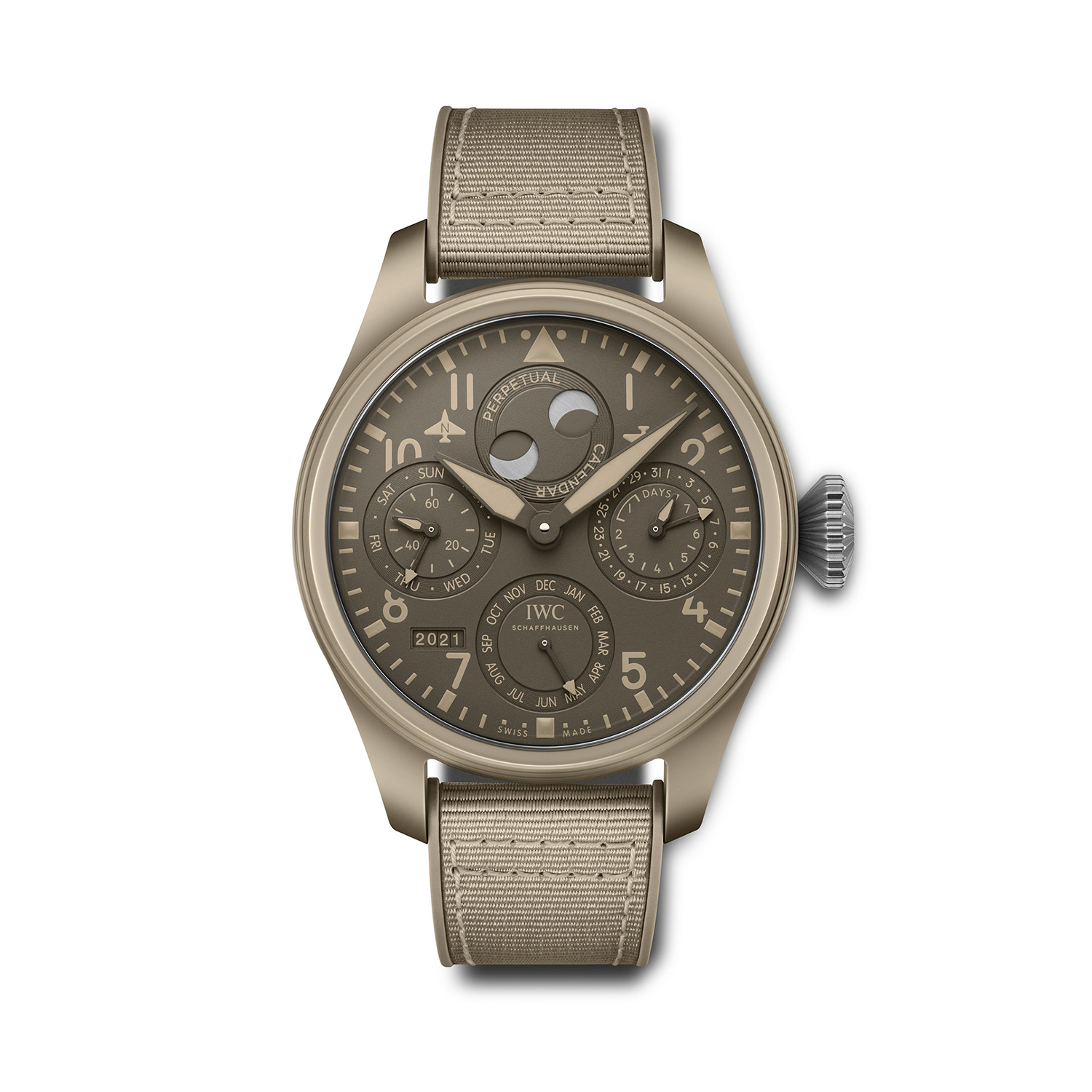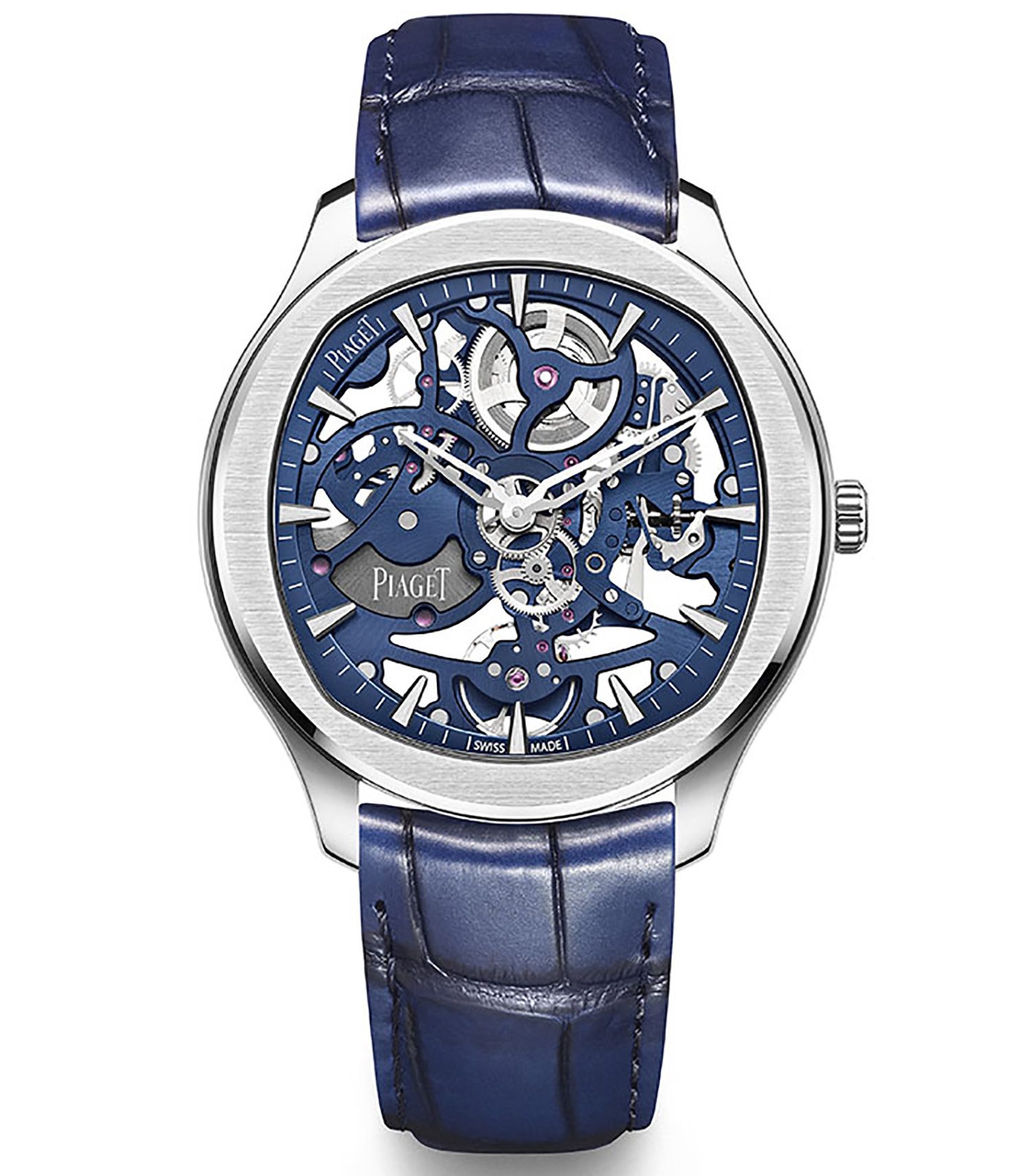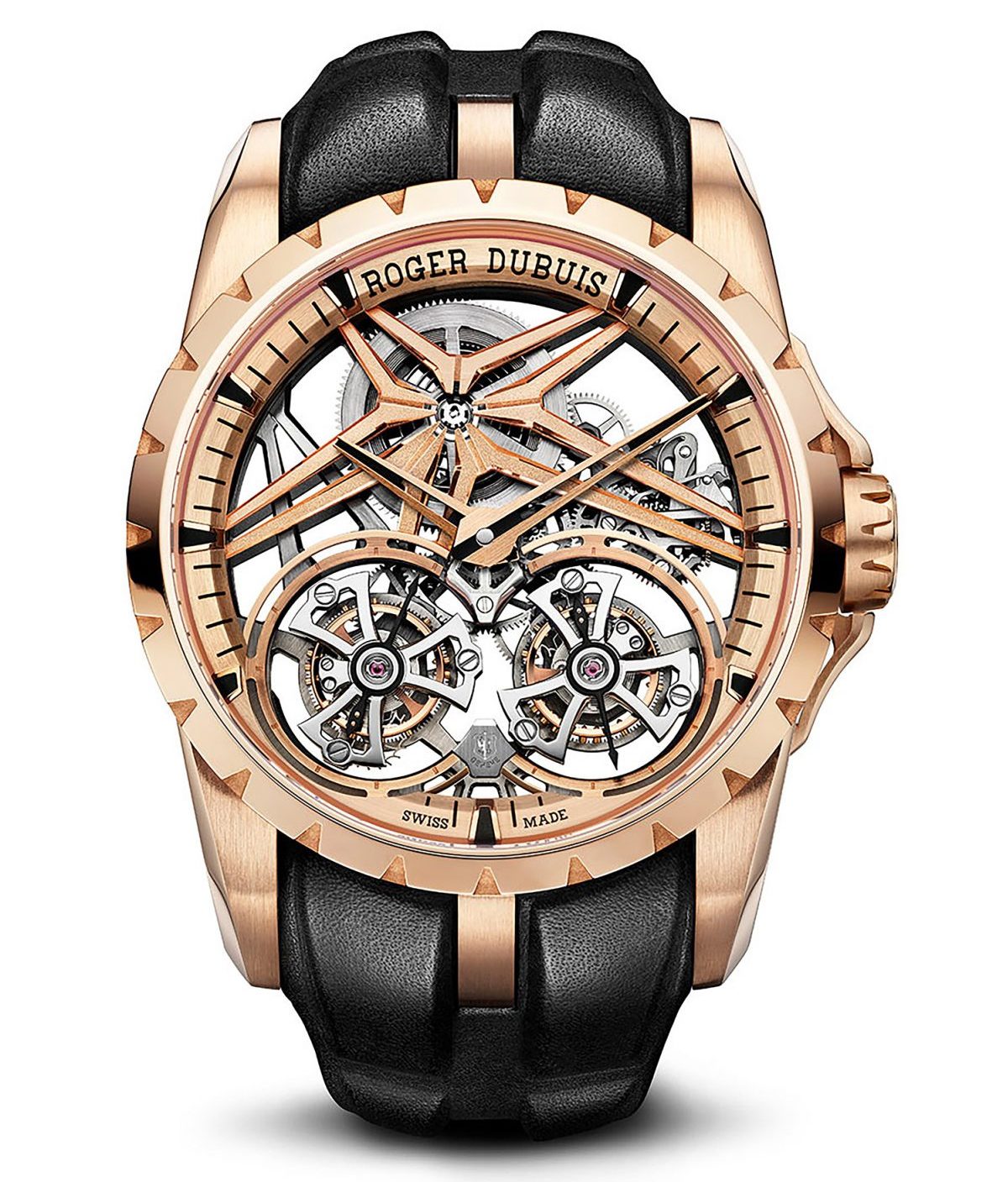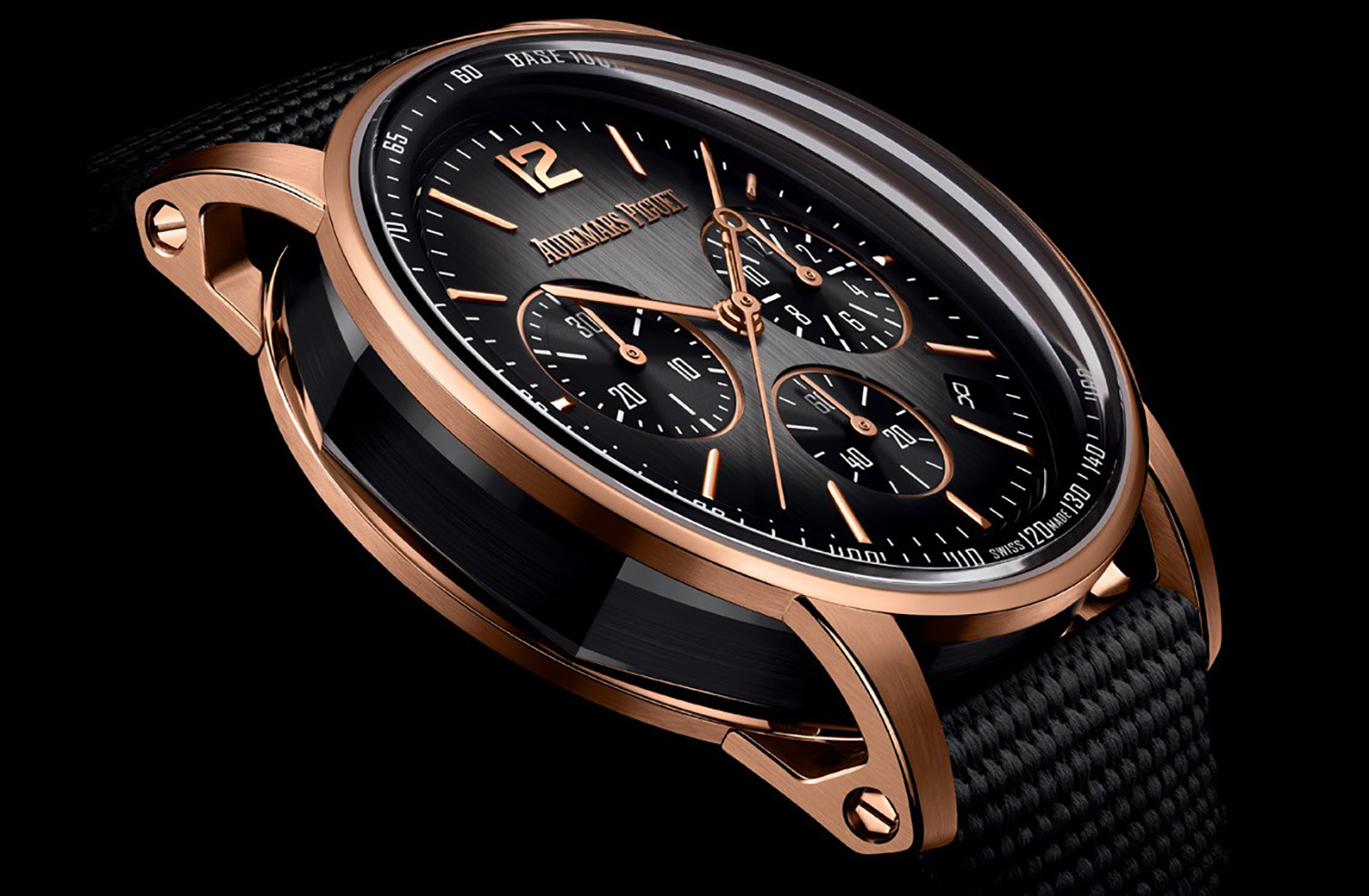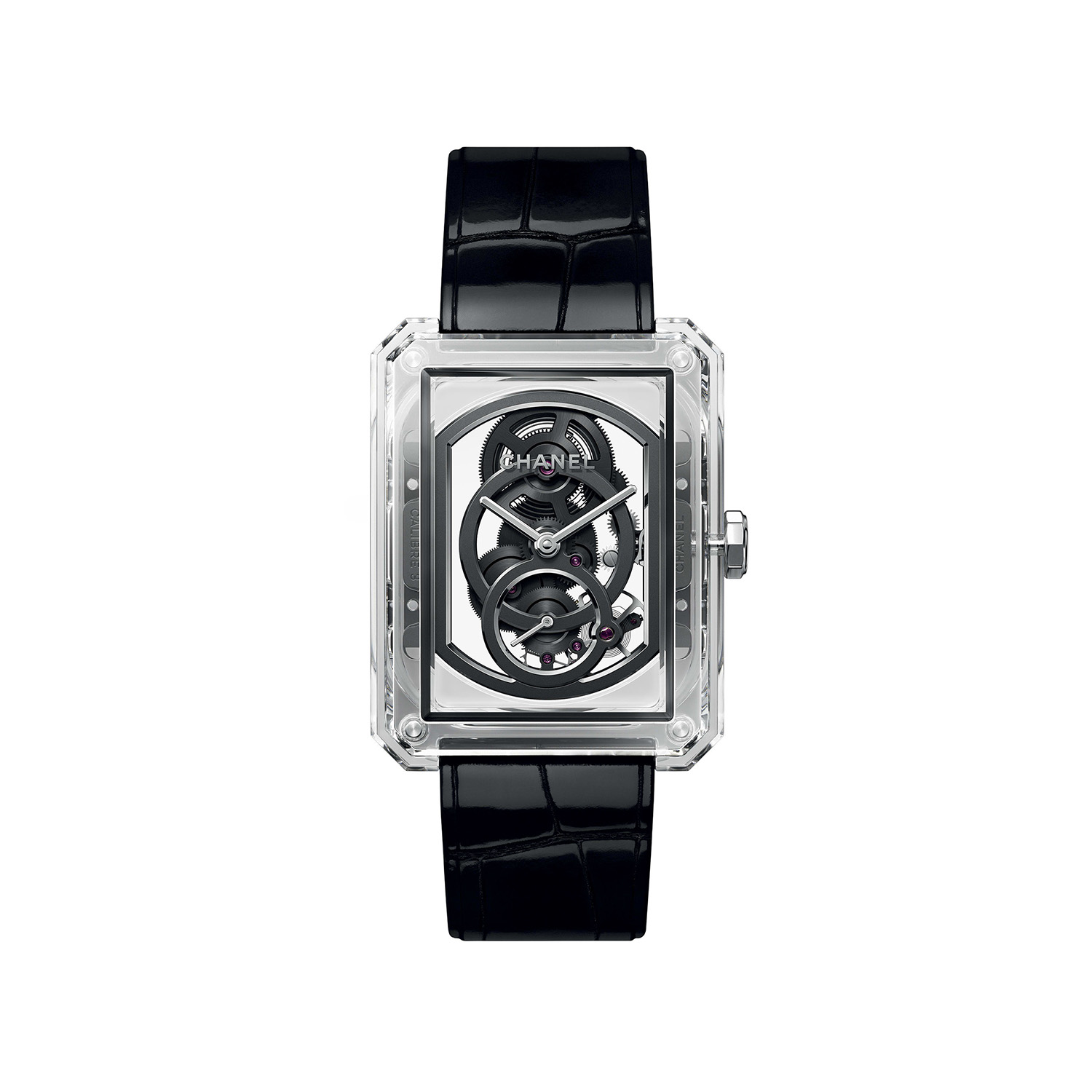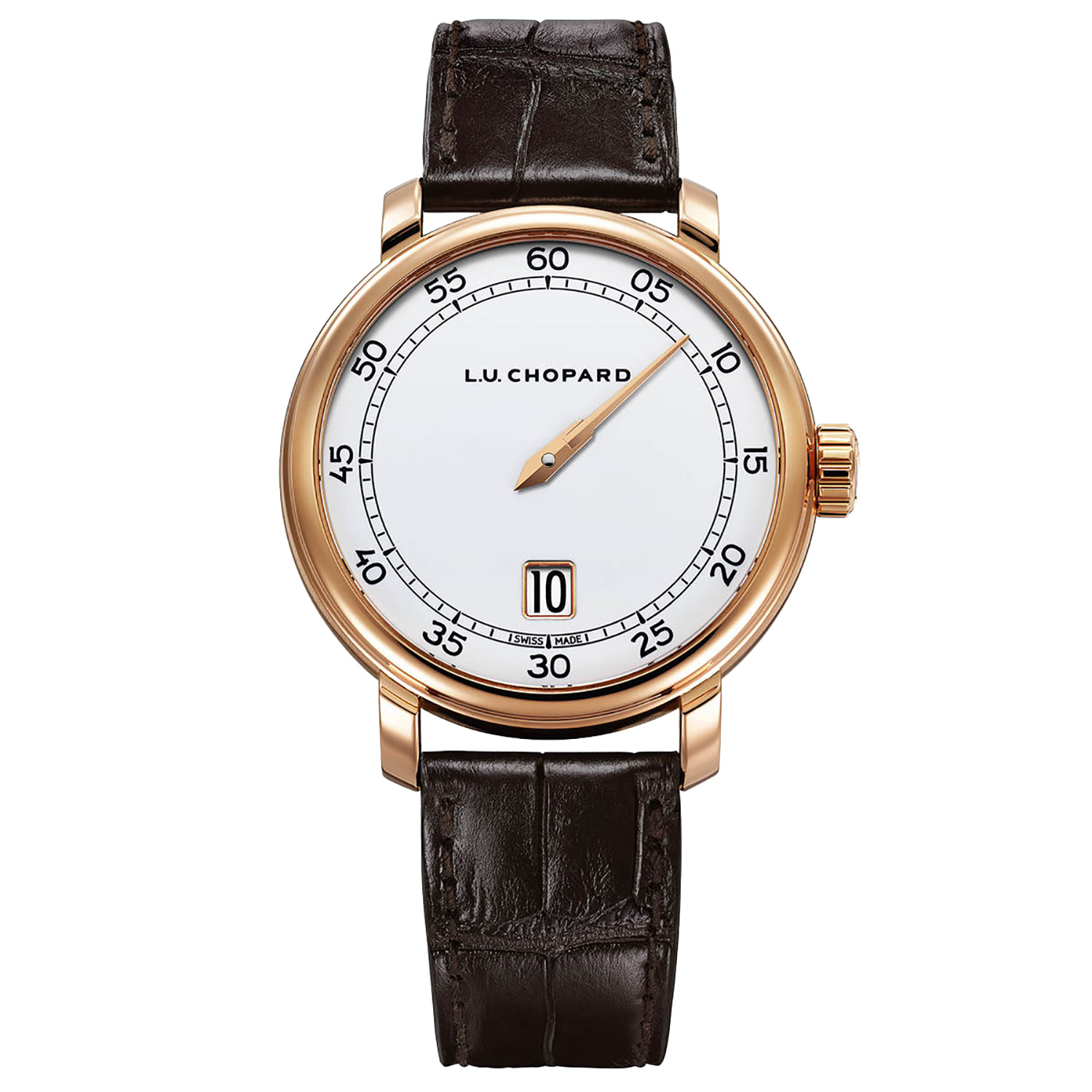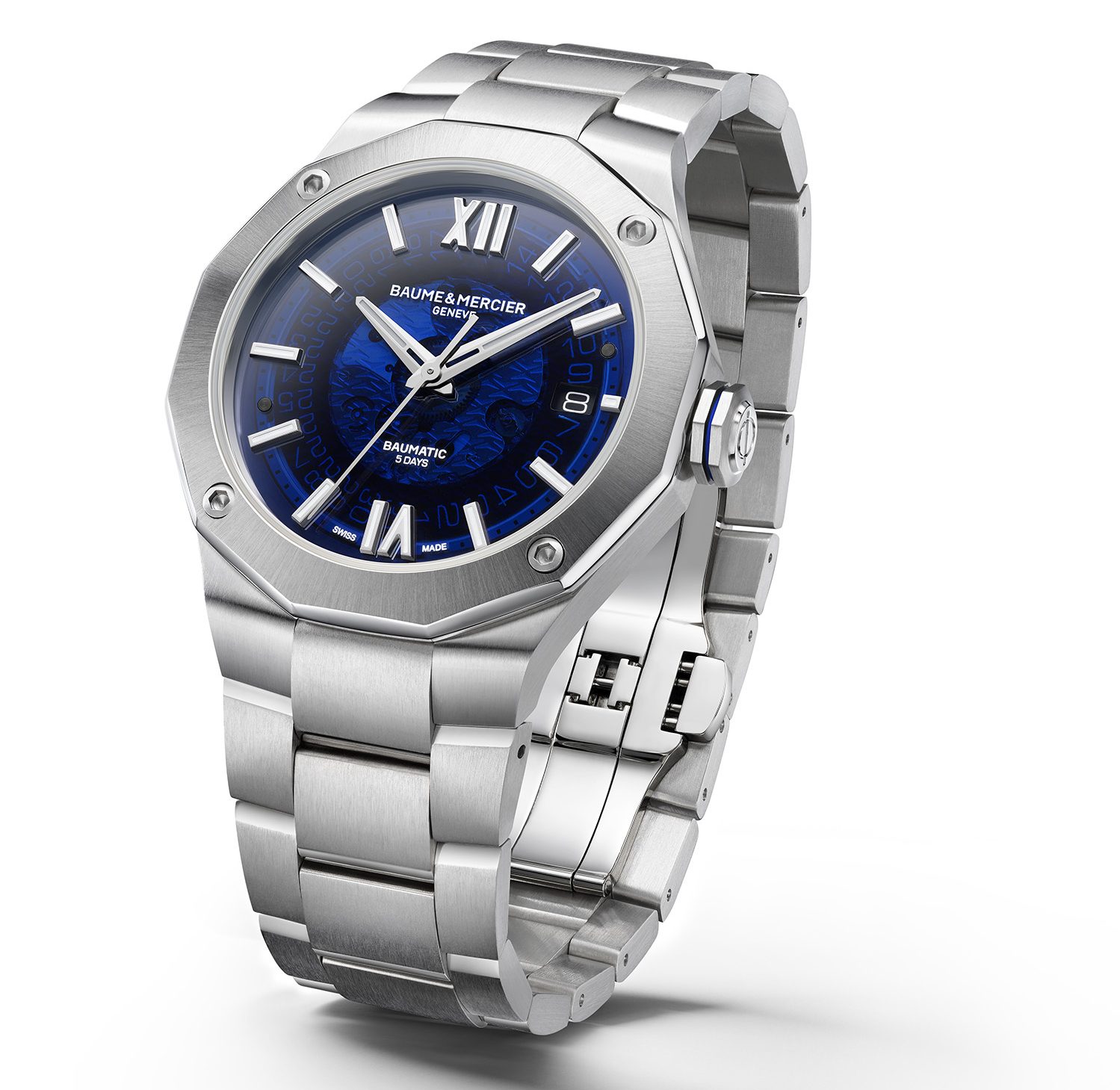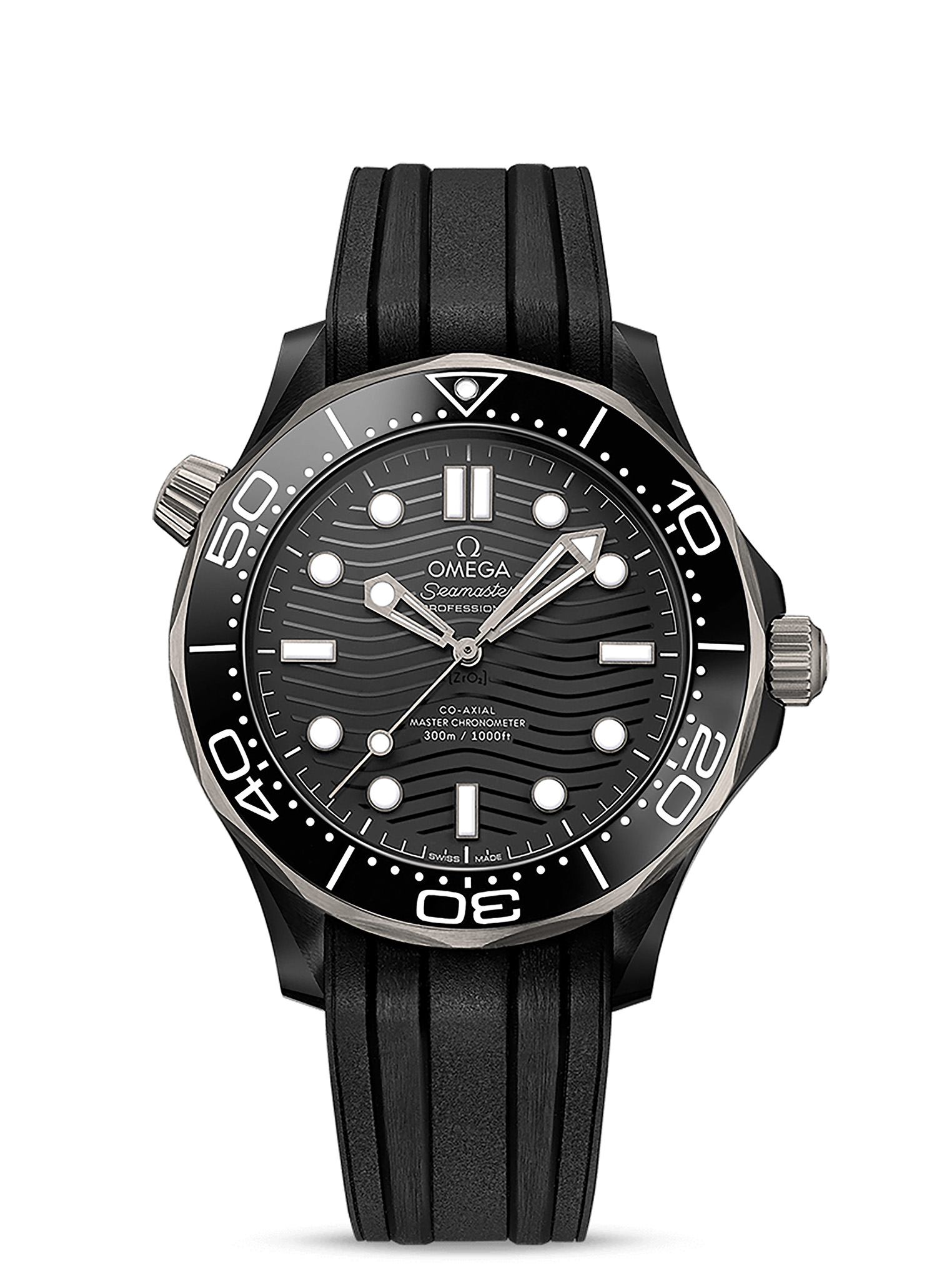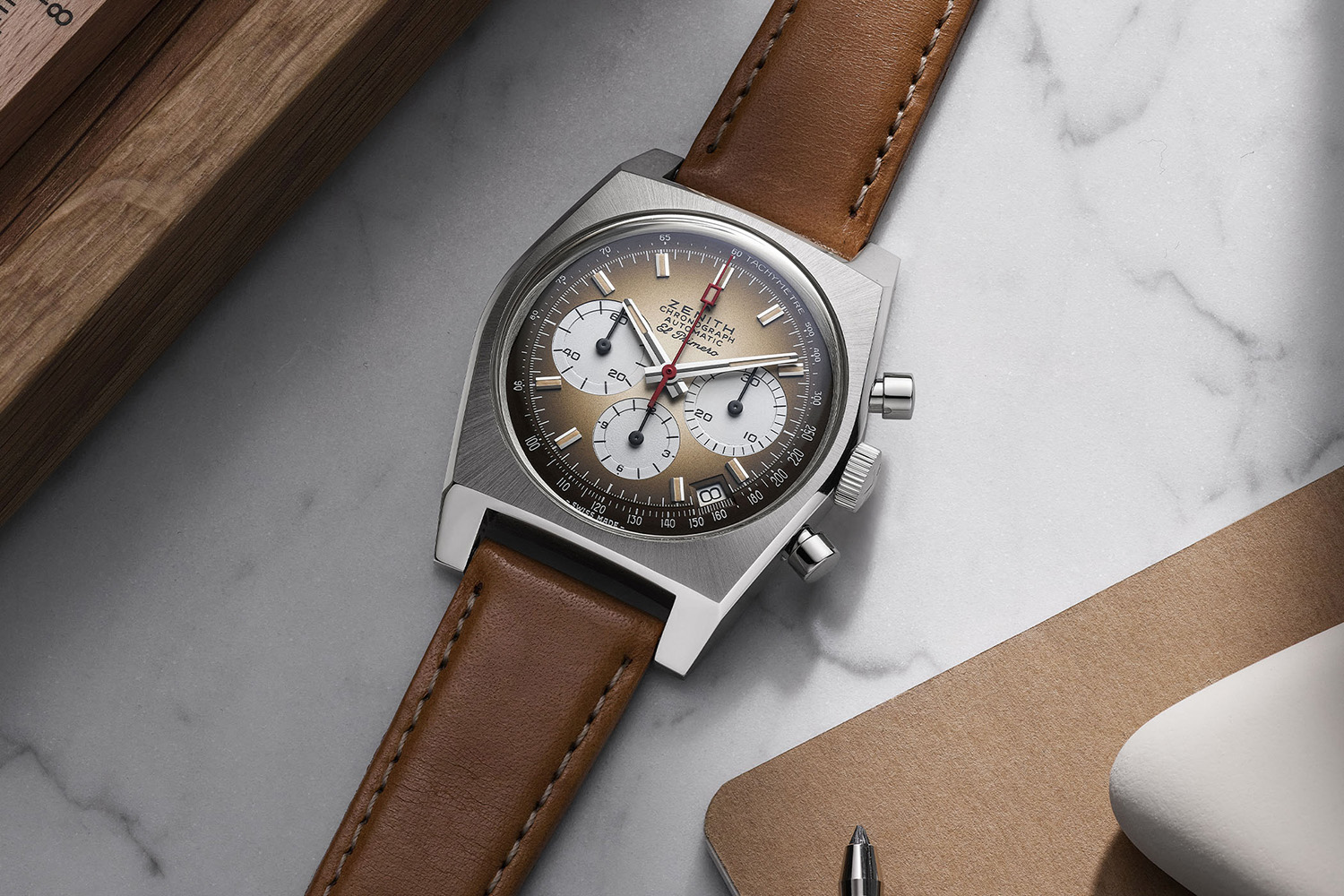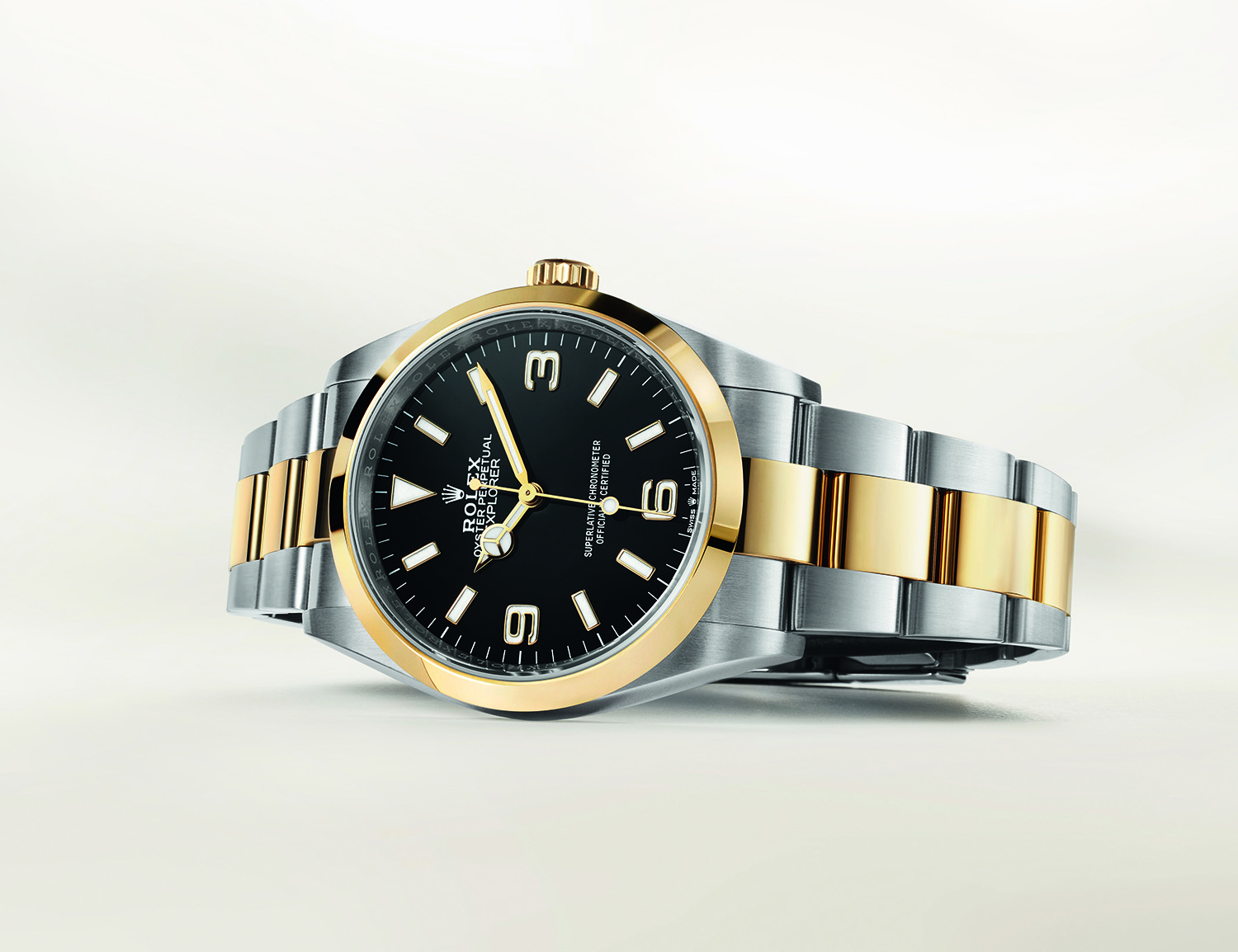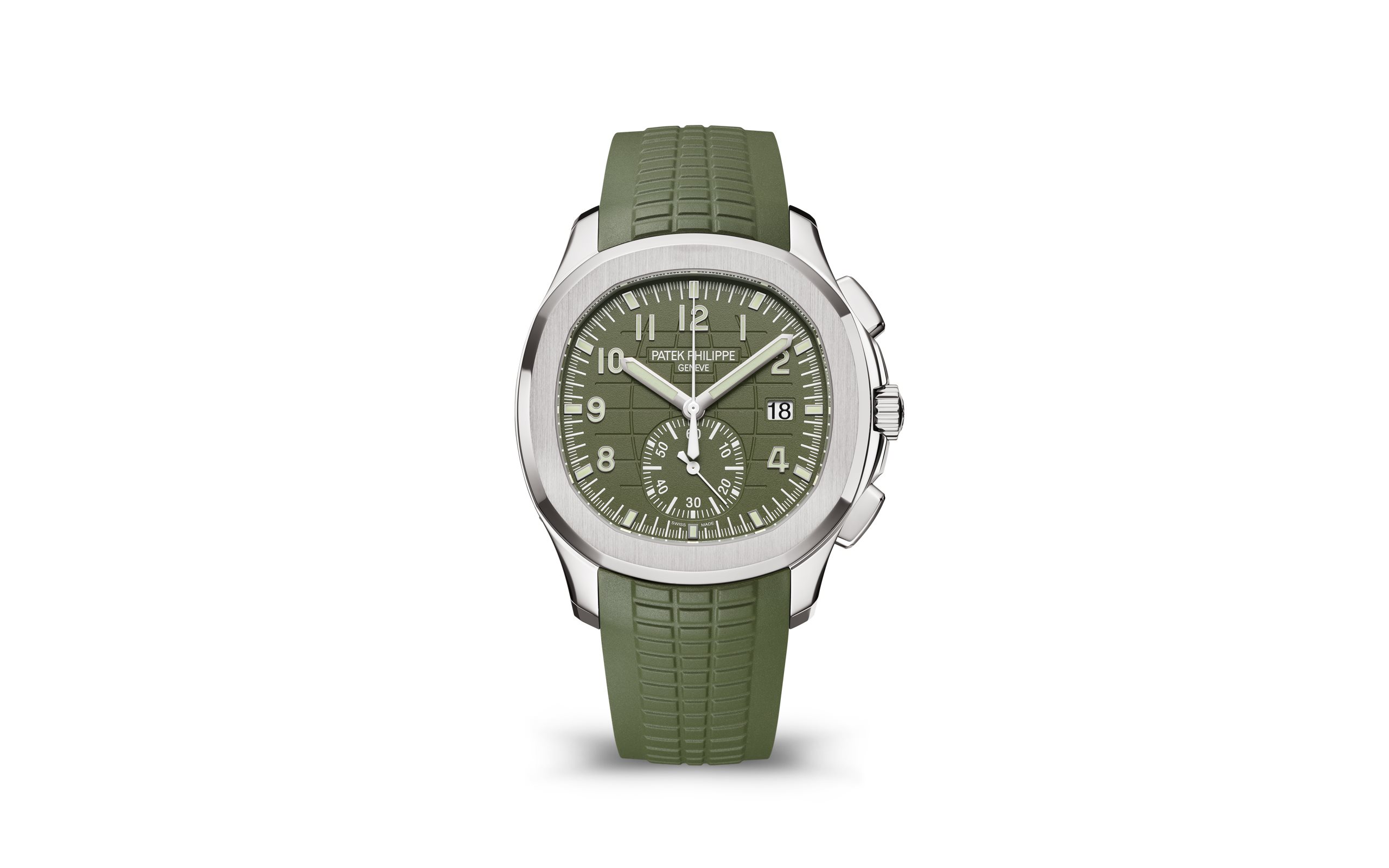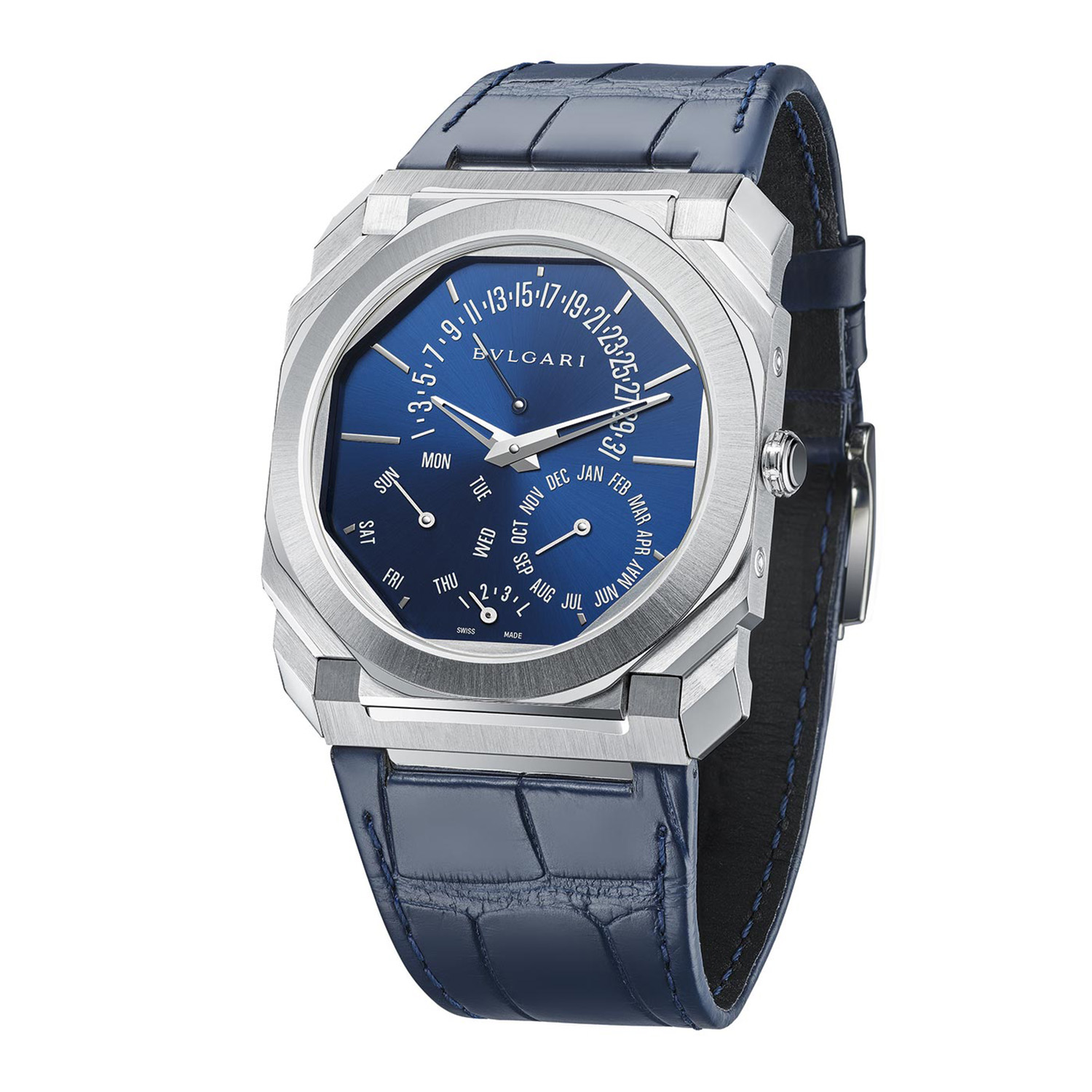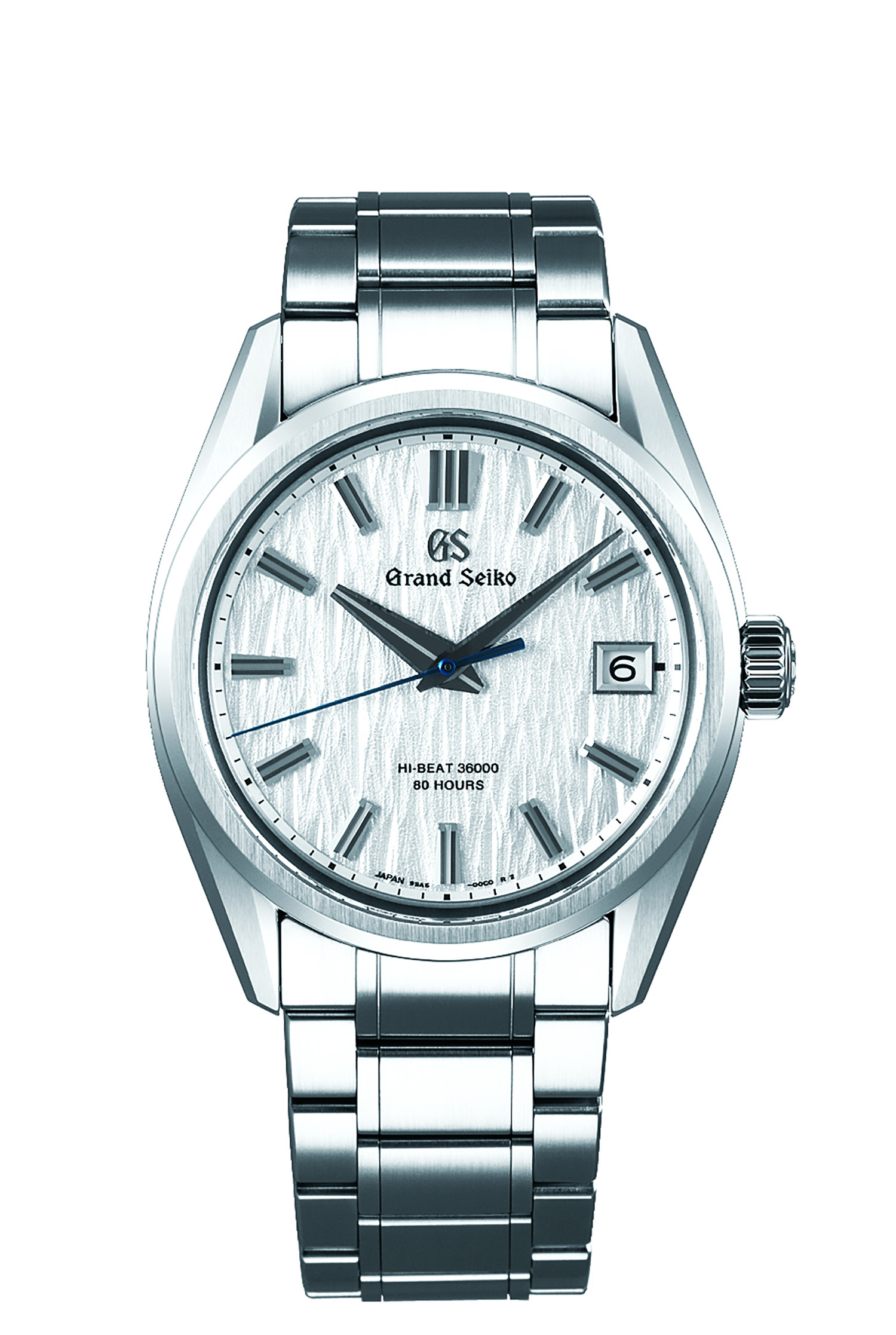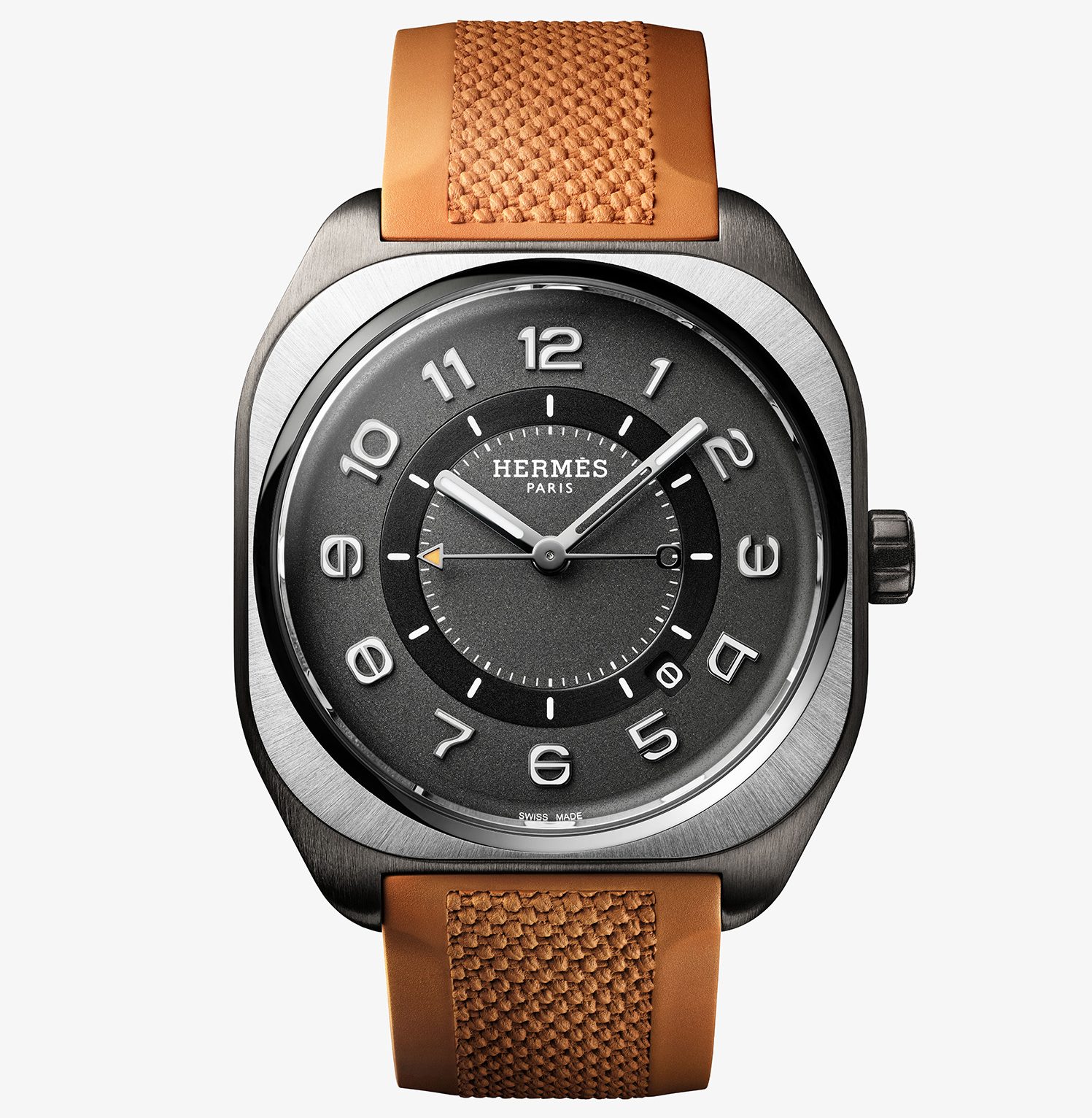
22 Best Watch Releases Of 2021 (So Far)
Here, our highly-curated pick of the year’s best timepieces to date.
Related articles
2021 has been a heady horological year that’s seen the debut of a wealth of alluring new releases. From the dominance of green-dialled design, to the birth of ever-more complicated references and the constant drive for innovation within watchmaking, a plethora of timepieces have caught the eye of the Robb Report team. Here, our highly-curated pick of the best to land so far.
Jaeger-LeCoultre Reverso Quadriptyque
Get this: this watch will not only tell you the time, but the day, date, month, if it’s day or night, and whether or not it’s a leap year. It’s also equipped with a celestial and astronomical function, meaning you can track exactly how far we are into the synodic, draconic and anomalistic cycles. Oh, and on the fourth of the watch’s four faces, a moonphase indicator will display the stage of the Moon in the Southern Hemisphere. It does all of this via a series of cogs and gears inside a case that’s just 51mm x 31mm x 15.15mm. Astonishing.
IWC Big Pilot Perpetual Calendar Top Gun Edition Mojave Desert
For its latest ‘Mojave Desert’ models, IWC sticks to the original, larger-than-life 46mm format. Undoubtedly one of the most eye-catching launches of the year so far, the watch is now available as a perpetual calendar and a simple three-hander. We say simple … even the time-only model houses a twin spring-barrel movement that provides a seven-day power reserve.
Piaget Polo Skeleton
Every watch brand has its shtick. Piaget has two specialisms; skeletonisation and ultra-thin movements, fortes writ large in the new Polo Skeleton. The model is 30 per cent thinner than existing Polo watches, with a 42mm case that’s been slimmed down to just 6.5mm thick. An in-house, wafer-thin movement measures just 2.4mm deep. Despite its leanness, the watch has a 44-hour power reserve and is water-resistant to 30 metres. If you’re not digging the blue, choose slate grey instead.
MB&F Horological Machine N°9 ‘Sapphire Vision‘
In 2019, MB&F presented the Horological Machine N°9, the case of which was designed to mimic the flowing, aerodynamic lines of cars from the 1940s and ‘50s: MB&F founder Maximilian Büsser described the engine inside the watch as “the most beautiful movement we’ve created to date”. So it stands to reason that Büsser would want to show off that engine. Why did it take two years to create a transparent shell? Because sapphire crystal is one of the most difficult materials with which to work. Most sapphire cases are composed of two flat slabs screwed together. The HM9 is all bubbles and curves. It took two years for MB&F to crack the case—not literally, obviously.
Roger Dubuis Excalibur Double Flying Tourbillon
Fresh from its cameo in one of the most-watched documentaries of all time—see the wrists of Michael Jordan and Scottie Pippen in last year’s The Last Dance—Roger Dubuis presents the latest interpretation of its Excalibur Double Flying Tourbillon. A quick-release system allows owners to switch between straps, although the Tourbillon club remains exclusive. Only 24 examples are being made—eight in white gold, eight in pink gold and eight in pink gold with diamond-set bezels and lugs.
Audemars Piguet Code 11.59 Selfwinding Chronograph 41mm
AP sandwiches a black ceramic case between a bezel and case-back made of either pink or white gold. The Code 11.59 collection was launched to diversify the brand away from its seminal octagonal sports watch, the Royal Oak. While it doesn’t look like Gérald Genta’s design classic will be knocked off its pedestal any time soon, AP continues to demonstrate its commitment to the most provocative watch of the past few years.
Chanel Boy.Friend Skeleton X-Ray
When it first dropped in 2015, its dainty proportions and diamonds positioned it as women’s watch, even if the brand wouldn’t say so explicitly. Yet there was enough masculinity in the Tank-like design to widen the watch’s appeal. The brand has since described the timepiece as “gender fluid”. The Skeleton X-Ray presents Chanel’s stunning, vertically laid-out, in-house Calibre 3 in all its floating glory, thanks to an all-sapphire case. Don’t let the name put you off.
Chopard L.U.C Quattro Spirit 25
If you appreciate sophisticated watchmaking, the elegant Quattro Spirit 25—Chopard’s first jumping-hour timepiece—features an 18-carat rose-gold case and a beautiful Grand Feu white enamel dial, with an hour aperture at six o’clock. Almost the entire watch, from the enamelling process to the production of its four-barrel movement, was completed within Chopard’s manufacturing facility in Fleurier, Switzerland.
Hublot Big Bang Integral Ceramic (Grey)
There’s a lot to like about this new Hublot—the integrated bracelet, for starters. Then there’s the single-material architecture, and the fact that it’s twice as scratch-resistant as steel. Mostly, though, it’s about this particular colour; a polished-then-satin-finished, titanium-esque, gunmetal grey. The 42mm watch is also available in white and midnight-blue, but it’s this stealthy, steely number that’s the real head-turner.
Baume Et Mercier Riviera
A sense of refinement drapes the return of B&M’s Riviera, a robust piece famed for its 12-sided bezel, and which debuted in 1973. That ’70s spark remains and the reissue feels right in regards to its timing, given the ascendancy of integrated steel bracelets. The contemporary outing means three sizes—36mm, 42mm or 43mm case—with the top-spec Baumatic edition boasting the in-house Baumatic movement launched in 2018.
OMEGA Seamaster 300m Black Black
While Omega waits for its two major publicity exercises to get underway (James Bond movie, Olympic Games), they’ve delivered the Seamaster Diver 300M Black Black. That’s not a typo; so blacked-out is the latest version of Bond’s watch that one “Black” wouldn’t do. The watch’s dial is made from black ceramic, as is the minute track around its edge. The use of two different colour lumes on the Black Black’s indices and hands means it’s not impossible to tell the time.
Zenith Chronomaster Revival A385
Much more than just a sepia-tinted throwback, Zenith’s latest Chronomaster is a genuine reissue of one of the original three stainless-steel El Primero models from 1969. The original tonneau-shaped A385 featured a brown gradient dial—possibly the first “smoked” dial ever made. This year’s A385 uses the production plans from the initial model, to wit: a 37mm case, pump-style pushers and, if you opt for metal over calf leather, a stainless-steel ladder-style bracelet.
Rolex Explorer + Explorer II
Updates to Rolex models can seem to offer a new definition of the word “incremental”. Not so in 2021. The brand resisted giving its Explorer the precious metal treatment for 68 years. Finally, it caved. Not only has the watch been reduced to its original 36mm size, the Explorer is available in two-tone—a streak of yellow-gold contrasts against cool, utilitarian stainless steel. Less obvious are the revisions to the updated Explorer II. The watch features the same case size but is now equipped with Rolex’s latest-gen movement.
Ulysse Nardin UFO Table Clock
The dive watch specialist is celebrating its 175th anniversary, a milestone it marks with the Unidentified Floating Object, geddit? The table clock is said to contain all of Ulysse Nardin’s horological history in one object, from marine chronometers of the 19th and 20th centuries to the brand’s silicon-escapement-equipped wristwatches of the 21st century. CEO Patrick Pruniaux asked his watchmakers what a marine chronometer would look like in 175 years’ time. The UFO was their answer.
Patek Philippe Aquanaut Chronograph Ref. 5968G
Although the green Nautilus is certainly noteworthy. The hype machine that powers it has seen it skyrocket beyond the logic of most watch collectors. Instead, Robb Report is partial to the Aquanaut ref. 5968-G. Here the first-ever white gold Aquanaut chronograph in the khaki dial colour is a stylish addition to the wrist with the automatic calibre CH 28-520 C movement powering the watch. The 42.2mm case is water-resistant to 120-metres and showcases Patek’s otherworldy attention to detail.
Bremont Argonaut Azure
It’s already been a busy year for British brand Bremont. Not only did the watchmaker become the official timing partner to Formula 1 team Williams Racing, it also opened a sprawling new Manufacturing and Technology Centre as part of its 19-year quest to produce proprietary movements in the UK. There have also been watches, like the Argonaut Azure. A striking blue dial meets a 42mm hardened steel case and a bright-orange strap.
Blancpain Fifty Fathoms ‘No Radiations’
The new Fifty Fathoms ‘No Rad’ offers a 40.3mm stainless-steel case (a size now reserved for limited-edition novelties) fitted with a matte black dial and contrasting markings on the hour, chapter ring, hands, time scale and bezel in ‘old radium’- coloured SuperLuminova. The timepiece comes powered by Blancpain’s Calibre 1151 – a self-winding movement that boats silicon balance spring and four-day power reserve. The watch arrives with a strap in ‘Tropic’-type rubber, a material popular with divers in the ‘60s due to its durability and general comfort.
Bulgari Octo Finissimo Perpetual Calendar
The cult status of the Bulgari Octo Finissimo continues to gather pace. New for 2021 is the Octo Finissimo Perpetual Calendar, the slimmest example of the grand complication ever created—another world record for the company. The watch is just 5.8mm thick—not a lot of space to fit in a complication that will take into account the lengths of different months, as well as leap years, automatically.
Grand Seiko White Birch Forest Hi-Beat
Forged in the brand’s manufacture in Shizukuishi, Japan, the dial of Grand Seiko’s White Birch Forest Hi-Beat has been made to resemble the birch tre-es that grow in the surrounding forests. The watch houses a high-beat movement with an 80-hour power reserve, which is accurate to an impressive +5 to -3 seconds per day. You can watch the calibre do its thing through an exhibition case-back.
Hermès H08
There was a time when Hermès was a brand more closely associated with horses than horology. Yet the Parisian leather goods specialist has been noiselessly delivering whimsical wristwatches for several years now. There’s a lot going on with the brand’s new H08. Circles in squares, matt on gloss, orange on black, vulcanised rubber on DLC-coated titanium, a fun, characterful numeral font, and a tiny date window at half past four. It’s a winner. Tactile. Graphic. Multifaceted. Mathematic, even.
Vacheron Constantin Historiques American 1921
“Classic with a twist”. That’s Vacheron Constantin’s theme for 2021. So it stands to reason that the storied horologist would choose this year to revive one the most avant-garde timepieces. It helps that the diagonal-dial Reference 11677 is celebrating its centenary. Three faithfully reinterpreted versions have been revealed, including a dazzling 40mm white gold edition. True to the original, the timepiece features a manually-wound movement housed in a case that’s just 8mm thick.
Cartier Tank Must
Based on the Tank Louis Cartier of 1922, the original Tank Must debuted in 1977 with a rectangular case and a mechanical hand-wound movement. Well, now the Must is back, replacing the discontinued Tank Solo. There are 17 references in total, split across three case sizes, which are available in steel or precious metals, and housing both mechanical and quartz movements. Most noteworthy of all, perhaps, was the announcement that Cartier is working on a movement that will be powered, in part, by light.
Subscribe to the Newsletter
Recommended for you
Watches & Wonders 2024 Showcase: Hermès
We head to Geneva for the Watches & Wonders exhibition; a week-long horological blockbuster featuring the hottest new drops, and no shortage of hype.
By Josh Bozin
July 24, 2024
Watch This Space: Mike Nouveau
Meet the game-changing horological influencers blazing a trail across social media—and doing things their own way.
By Josh Bozin
July 22, 2024
You may also like.
By Josh Bozin
24/07/2024
You may also like.
5 Lounge Chairs That Add Chic Seating to Your Space
Daybeds, the most relaxed of seating solutions, offer a surprising amount of utility.
Chaise longue, daybed, recamier, duchesse brisée—elongated furniture designed for relaxing has a roster of fancy names. While the French royal court of Louis XIV brought such pieces to prominence in fashionable European homes, the general idea has been around far longer: The Egyptian pharaohs were big fans, while daybeds from China’s Ming dynasty spurred all those Hollywood Regency fretwork pieces that still populate Palm Beach living rooms. Even Mies van der Rohe, one of design’s modernist icons, got into the lounge game with his Barcelona couch, a study of line and form that holds up today.
But don’t get caught up in who invented them, or what to call them. Instead, consider their versatility: Backless models are ideal in front of large expanses of glass (imagine lazing on one with an ocean view) or at the foot of a bed, while more structured pieces can transform any corner into a cozy reading nook. Daybeds may be inextricably linked to relaxation, but from a design perspective, they put in serious work.

Emmy, Egg Collective
In designing the Emmy chaise, the Egg Collective trio of Stephanie Beamer, Crystal Ellis and Hillary Petrie, who met as students at Washington University in St. Louis, aimed for versatility. Indeed, the tailored chaise looks equally at home in a glass skyscraper as it does in a turn-of-the-century town house. Combining the elegance of a smooth, solid oak or walnut frame with the comfort of bolsters and cushioned upholstery or leather, it works just as well against a wall or at the heart of a room. From around $7,015; Eggcollective.com
 Plum, Michael Robbins
Plum, Michael Robbins
Woodworker Michael Robbins is the quintessential artisan from New York State’s Hudson Valley in that both his materials and methods pay homage to the area. In fact, he describes his style as “honest, playful, elegant and reflective of the aesthetic of the Hudson Valley surroundings”. Robbins crafts his furniture by hand but allows the wood he uses to help guide the look of a piece. (The studio offers eight standard finishes.) The Plum daybed, brought to life at Robbins’s workshop, exhibits his signature modern rusticity injected with a hint of whimsy thanks to the simplicity of its geometric forms. Around $4,275; MichaelRobbins.com

Kimani, Reda Amalou Design
French architect and designer Reda Amalou acknowledges the challenge of creating standout seating given the number of iconic 20th-century examples already in existence. Still, he persists—and prevails. The Kimani, a bent slash of a daybed in a limited edition of eight pieces, makes a forceful statement. Its leather cushion features a rolled headrest and rhythmic channel stitching reminiscent of that found on the seats of ’70s cars; visually, these elements anchor the slender silhouette atop a patinated bronze base with a sure-handed single line. The result: a seamless contour for the body. Around $33,530; RedaAmalou
Dune, Workshop/APD
From a firm known for crafting subtle but luxurious architecture and interiors, Workshop/APD’s debut furniture collection is on point. Among its offerings is the leather-wrapped Dune daybed. With classical and Art Deco influences, its cylindrical bolsters are a tactile celebration, and the peek of the curved satin-brass base makes for a sensual surprise. Associate principal Andrew Kline notes that the daybed adeptly bridges two seating areas in a roomy living space or can sit, bench-style, at the foot of a bed. From $13,040; Workshop/ APD
Sherazade, Edra
Designed by Francesco Binfaré, this sculptural, minimalist daybed—inspired by the rugs used by Eastern civilizations—allows for complete relaxation. Strength combined with comfort is the name of the game here. The Sherazade’s structure is made from light but sturdy honeycomb wood, while next-gen Gellyfoam and synthetic wadding aid repose. True to Edra’s amorphous design codes, it can switch configurations depending on the user’s mood or needs; for example, the accompanying extra pillows—one rectangular and one cylinder shaped— interchange to become armrests or backrests. From $32,900; Edra
You may also like.
By Josh Bozin
24/07/2024
22/07/2024
Watches & Wonders 2024 Showcase: Hermès
We head to Geneva for the Watches & Wonders exhibition; a week-long horological blockbuster featuring the hottest new drops, and no shortage of hype.
With Watches & Wonders 2024 well and truly behind us, we review some of the novelties Hermès presented at this year’s event.
—
HERMÈS

Moving away from the block colours and sporty aesthetic that has defined Hermès watches in recent years, the biggest news from the French luxury goods company at Watches & Wonders came with the unveiling of its newest collection, the Hermès Cut.
It flaunts a round bezel, but the case middle is nearer to a tonneau shape—a relatively simple design that, despite attracting flak from some watch aficionados, works. While marketed as a “women’s watch”, the Cut has universal appeal thanks to its elegant package and proportions. It moves away from the Maison’s penchant for a style-first product; it’s a watch that tells the time, not a fashion accessory with the ability to tell the time.
Hermès gets the proportions just right thanks to a satin-brushed and polished 36 mm case, PVD-treated Arabic numerals, and clean-cut edges that further accentuate its character. One of the key design elements is the positioning of the crown, boldly sitting at half-past one and embellished with a lacquered or engraved “H”, clearly stamping its originality. The watch is powered by a Hermès Manufacture movement H1912, revealed through its sapphire crystal caseback. In addition to its seamlessly integrated and easy-wearing metal bracelet, the Cut also comes with the option for a range of coloured rubber straps. Together with its clever interchangeable system, it’s a cinch to swap out its look.
It will be interesting to see how the Hermès Cut fares in coming months, particularly as it tries to establish its own identity separate from the more aggressive, but widely popular, Ho8 collection. Either way, the company is now a serious part of the dialogue around the concept of time.
—
Read more about this year’s Watches & Wonders exhibition at robbreport.com.au
You may also like.
22/07/2024
Living La Vida Lagerfeld
The world remembers him for fashion. But as a new tome reveals, the iconoclastic designer is defined as much by extravagant, often fantastical, homes as he is clothes.
“Lives, like novels, are made up of chapters”, the world-renowned bibliophile, Karl Lagerfeld, once observed.
Were a psychological-style novel ever to be written about Karl Lagerfeld’s life, it would no doubt give less narrative weight to the story of his reinvigoration of staid fashion houses like Chloe, Fendi and Chanel than to the underpinning leitmotif of the designer’s constant reinvention of himself.
In a lifetime spanning two centuries, Lagerfeld made and dropped an ever-changing parade of close friends, muses, collaborators and ambiguous lovers, as easily as he changed his clothes, his furniture… even his body. Each chapter of this book would be set against the backdrop of one of his series of apartments, houses and villas, whose often wildly divergent but always ultra-luxurious décor reflected the ever-evolving personas of this compulsively public but ultimately enigmatic man.
With the publication of Karl Lagerfeld: A Life in Houses these wildly disparate but always exquisite interiors are presented for the first time together as a chronological body of work. The book indeed serves as a kind of visual novel, documenting the domestic dreamscapes in which the iconic designer played out his many lives, while also making a strong case that Lagerfeld’s impact on contemporary interior design is just as important, if not more so, than his influence on fashion.

In fact, when the first Lagerfeld interior was featured in a 1968 spread for L’OEil magazine, the editorial describes him merely as a “stylist”. The photographs of the apartment in an 18th-century mansion on rue de Université, show walls lined with plum-coloured rice paper, or lacquered deepest chocolate brown in sharp contrast to crisp, white low ceilings that accentuated the horizontality that was fashionable among the extremely fashionable at the time. Yet amid this setting of aggressively au courant modernism, the anachronistic pops of Art Nouveau and Art Deco objects foreshadow the young Karl’s innate gift for creating strikingly original environments whose harmony is achieved through the deft interplay of contrasting styles and contexts.
Lagerfeld learned early on that presenting himself in a succession of gem-like domestic settings was good for crafting his image. But Lagerfeld’s houses not only provided him with publicity, they also gave him an excuse to indulge in his greatest passion. Shopping!
By 1973, Lagerfeld was living in a new apartment at Place Saint–Sulpice where his acquisition of important Art Deco treasures continued unabated. Now a bearded and muscular disco dandy, he could most often be found in the louche company of the models, starlets and assorted hedonistic beauties that gathered around the flamboyant fashion illustrator Antonio Lopez. Lagerfeld was also in the throes of a hopeless love affair with Jacques de Bascher whose favours he reluctantly shared with his nemesis Yves Saint Laurent.

He painted the rooms milky white and lined them with specially commissioned carpets—the tawny patterned striations of which invoked musky wild animal pelts. These lent a stark relief to the sleek, machine-age chrome lines of his Deco furnishings. To contemporary eyes it remains a strikingly original arrangement that subtly conveys the tensions at play in Lagerfeld’s own life: the cocaine fuelled orgies of his lover and friends, hosted in the pristine home of a man who claimed that “a bed is for one person”.
In 1975, a painful falling out with his beloved Jacques, who was descending into the abyss of addiction, saw almost his entire collection of peerless Art Deco furniture, paintings and objects put under the auctioneer’s hammer. This was the first of many auction sales, as he habitually shed the contents of his houses along with whatever incarnation of himself had lived there. Lagerfeld was dispassionate about parting with these precious goods. “It’s collecting that’s fun, not owning,” he said. And the reality for a collector on such a Renaissance scale, is that to continue buying, Lagerfeld had to sell.
Of all his residences, it was the 1977 purchase of Hôtel Pozzo di Borgo, a grand and beautifully preserved 18th-century house, that would finally allow him to fulfill his childhood fantasies of life in the court of Madame de Pompadour. And it was in this aura of Rococó splendour that the fashion designer began to affect, along with his tailored three-piece suits, a courtier’s ponytailed and powdered coif and a coquettish antique fan: marking the beginning of his transformation into a living, breathing global brand that even those with little interest in fashion would immediately recognise.

Lagerfeld’s increasing fame and financial success allowed him to indulge in an unprecedented spending frenzy, competing with deep-pocketed institutions like the Louvre to acquire the finest, most pedigreed pearls of the era—voluptuously carved and gilded bergères; ormolu chests; and fleshy, pastel-tinged Fragonard idylls—to adorn his urban palace. His one-time friend André Leon Talley described him in a contemporary article as suffering from “Versailles complex”.
However, in mid-1981, and in response to the election of left-wing president, François Mitterrand, Lagerfeld, with the assistance of his close friend Princess Caroline, became a resident of the tax haven of Monaco. He purchased two apartments on the 21st floor of Le Roccabella, a luxury residential block designed by Gio Ponti. One, in which he kept Jacques de Bascher, with whom he was now reconciled, was decorated in the strict, monochromatic Viennese Secessionist style that had long underpinned his aesthetic vocabulary; the other space, though, was something else entirely, cementing his notoriety as an iconoclastic tastemaker.

Lagerfeld had recently discovered the radically quirky designs of the Memphis Group led by Ettore Sottsass, and bought the collective’s entire first collection and had it shipped to Monaco. In a space with no right angles, these chaotically colourful, geometrically askew pieces—centred on Masanori Umeda’s famous boxing ring—gave visitors the disorientating sensation of having entered a corporeal comic strip. By 1991, the novelty of this jarring postmodern playhouse had inevitably worn thin and once again he sent it all to auction, later telling a journalist that “after a few years it was like living in an old Courrèges. Ha!”

In 1989, de Bascher died of an AIDS-related illness, and while Lagerfeld’s career continued to flourish, emotionally the famously stoic designer was struggling. In 2000, a somewhat corpulent Lagerfeld officially ended his “let them eat cake” years at the Hôtel Pozzo di Borgo, selling its sumptuous antique fittings in a massive headline auction that stretched over three days. As always there were other houses, but now with his longtime companion dead, and his celebrity metastasising making him a target for the paparazzi, he began to look less for exhibition spaces and more for private sanctuaries where he could pursue his endless, often lonely, work.
His next significant house was Villa Jako, named for his lost companion and built in the 1920s in a nouveau riche area of Hamburg close to where he grew up. Lagerfeld shot the advertising campaign for Lagerfeld Jako there—a fragrance created in memorial to de Bascher. The house featured a collection of mainly Scandinavian antiques, marking the aesthetic cusp between Art Nouveau and Art Deco. One of its rooms Lagerfeld decorated based on his remembrances of his childhood nursery. Here, he locked himself away to work—tellingly—on a series of illustrations for the fairy tale, The Emperor’s New Clothes. Villa Jako was a house of deep nostalgia and mourning.
But there were more acts—and more houses—to come in Lagerfeld’s life yet. In November 2000, upon seeing the attenuated tailoring of Hedi Slimane, then head of menswear at Christian Dior, the 135 kg Lagerfeld embarked on a strict dietary regime. Over the next 13 months, he melted into a shadow of his former self. It is this incarnation of Lagerfeld—high white starched collars; Slimane’s skintight suits, and fingerless leather gloves revealing hands bedecked with heavy silver rings—that is immediately recognisable some five years after his death.
The 200-year-old apartment in Quái Voltaire, Paris, was purchased in 2006, and after years of slumber Lagerfeld—a newly awakened Hip Van Winkle—was ready to remake it into his last modernist masterpiece. He designed a unique daylight simulation system that meant the monochromatic space was completely without shadows—and without memory. The walls were frosted and smoked glass, the floors concrete and silicone; and any hint of texture was banned with only shiny, sleek pieces by Marc Newson, Martin Szekely and the Bouroullec Brothers permitted. Few guests were allowed into this monastic environment where Lagerfeld worked, drank endless cans of Diet Coke and communed with Choupette, his beloved Birman cat, and parts of his collection of 300,000 books—one of the largest private collections in the world.

Lagerfeld died in 2019, and the process of dispersing his worldly goods is still ongoing. The Quái Voltaire apartment was sold this year for US$10.8 million (around $16.3 million). Now only the rue de Saint-Peres property remains within the Lagerfeld trust. Purchased after Quái Voltaire to further accommodate more of his books—35,000 were displayed in his studio alone, always stacked horizontally so he could read the titles without straining his neck—and as a place for food preparation as he loathed his primary living space having any trace of cooking smells. Today, the rue de Saint-Peres residence is open to the public as an arts performance space and most fittingly, a library.
You may also like.
By Josh Bozin
24/07/2024
Watch This Space: Mike Nouveau
Meet the game-changing horological influencers blazing a trail across social media—and doing things their own way.
In the thriving world of luxury watches, few people own a space that offers unfiltered digital amplification. And that’s precisely what makes the likes of Brynn Wallner, Teddy Baldassarre, Mike Nouveau and Justin Hast so compelling.
These thought-provoking digital crusaders are now paving the way for the story of watches to be told, and shown, in a new light. Speaking to thousands of followers on the daily—mainly via TikTok, Instagram and YouTube—these progressive commentators represent the new guard of watch pundits. And they’re swaying the opinions, and dollars, of the up-and-coming generations who now represent the target consumer of this booming sector.
—
MIKE NOUVEAU

Can we please see what’s on the wrist? That’s the question that catapulted Mike Nouveau into watch stardom, thanks to his penchant for highlighting incredibly rare timepieces across his TikTok account of more than 400,000 followers. When viewing Nouveau’s attention-grabbing video clips—usually shot in a New York City neighbourhood—it’s not uncommon to find him wrist-rolling some of the world’s rarest timepieces, like the million-dollar Cartier Cheich (a clip he posted in May).
But how did someone without any previous watch experience come to amass such a cult following, and in the process gain access to some of the world’s most coveted timepieces? Nouveau admits had been a collector for many years, but moved didn’t move into horology full-time until 2020, when he swapped his DJing career for one as a vintage watch specialist.
“I probably researched for a year before I even bought my first watch,” says Nouveau, alluding to his Rolex GMT Master “Pepsi” ref. 1675 from 1967, a lionised timepiece in the vintage cosmos. “I would see deals arise that I knew were very good, but they weren’t necessarily watches that I wanted to buy myself. I eventually started buying and selling, flipping just for fun because I knew how to spot a good deal.”
Nouveau claims that before launching his TikTok account in the wake of Covid-19, no one in the watch community knew he existed. “There really wasn’t much watch content, if any, on TikTok before I started posting, especially talking about vintage watches. There’s still not that many voices for vintage watches, period,” says Nouveau. “It just so happens that my audience probably skews younger, and I’d say there are just as many young people interested in vintage watches as there are in modern watches.”
View this post on Instagram
Nouveau recently posted a video to his TikTok account revealing that the average price of a watch purchased by Gen Z is now almost US$11,000 (around $16,500), with 41 percent of them coming into possession of a luxury watch in the past 12 months.
“Do as much independent research as you can [when buying],” he advises. “The more you do, the more informed you are and the less likely you are to make a mistake. And don’t bring modern watch expectations to the vintage world because it’s very different. People say, ‘buy the dealer’, but I don’t do that. I trust myself and myself only.”
—
Read more about the influencers shaking up horology here with Justin Hast, Brynn Wallner and Teddy Baldassare.
You may also like.
By Josh Bozin
24/07/2024
This Pristine 1960 Ferrari 250 Spider Could Fetch $24 Million at Auction
The car wears the same colours and has the same engine it left the factory with.
Some Ferraris are just a little bit more important than others.
Take, for example, the 1960 250 GT SWB California that RM Sotheby’s is auctioning off during this year’s Monterey Car Week. Any example of the open-top beauty would attract interest, but this one just so happens to be the first one that was built.
The 250 is one of the most legendary series of cars in Ferrari history. Between 1952 and 1964, the company released 21 different 250 models—seven for racetracks, 14 for public roads—of which the “Cali Spider” might be the most well regarded, thanks to its potent V-12 and a Pininfarina-penned design that is one of the most beautiful bodies to grace an automobile. The roadster, which was specifically built for the U.S., made its debut in 1957 as a long-wheel-base model (LWB), but it wasn’t until the SWB model debut in 1960 that it became clear how special it was. This example isn’t just the first to roll off the line. It’s the actual car that was used to introduce the world to the model at the 1960 Geneva Motor Show.

Just 56 examples of the 250 GT SWB California Spider would be built by Scaglietti during the three years it was in production. The first of those, chassis 1795 GT, is finished in a glossy coat of Grigio. The two-door had a red leather interior at Geneva but was returned to the factory and re-outfitted with black leather upholstery before being delivered to its original owner, British race car driver John Gordon Bennet. Six-and-a-half decades later the car looks identical to how it did when it left the factory the second time.

In addition to its original bodywork, the chassis 1795 GT features its original engine, gearbox, and rear axle. That mill is the competition-spec Tipo 168, a 3.0-litre V-12 that makes 196.1 kW. That may not sound like much by today’s standards, but, when you consider that the 250 GT SWB California Spider tips the scales around 952 kilograms, it’s more than enough.

The first 250 GT SWB California Spider is scheduled to go up for bid during RM Sotheby’s annual Monterey Car Week auction, which runs from Thursday, August 15, to Saturday, August 17. Unsurprisingly, the house has quite high hopes for the car. The car carries an estimate of between $24 million and $26 million, which could make it one of the most expensive cars ever sold at auction.

You may also like.
By Josh Bozin
24/07/2024






